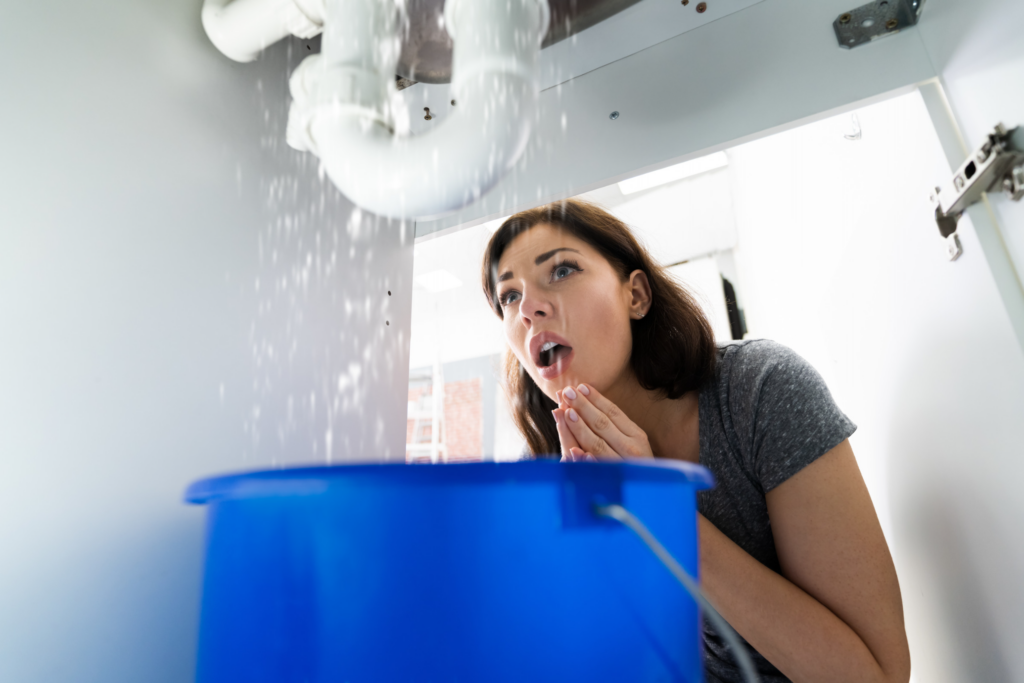
What to Do in Case of a Leak
Are you tired of dealing with dripping faucets and leaking pipes in your home? It’s one thing to know where the water leak is coming from, but how do you fix it? Replacing or repairing a leaking pipe can be overwhelming — especially if it’s hidden behind walls or ceilings. Fortunately, there are some easy steps that anyone can take to figure out what kind of repair needs to be done and when an expert should step in.
In this blog post, we’ll provide helpful tips on how to locate the source of a leak and explain the best ways to fix each issue effectively. So whether it’s something small like replacing a washer in your kitchen faucet or something bigger like getting professional help for major plumbing repairs, this blog post has all the information you need!
- Identify the Source of the Leak
- Look for signs of water damage such as wet spots, discoloration, or mold growth. Check the ceilings, walls, and floors for any signs of water stains, peeling paint, or wallpaper, or warped or damaged surfaces.
- Trace the water back to its source to identify the leak. Check the plumbing fixtures in the affected area, including sinks, toilets, showers, and tubs. Look for visible leaks or drips and listen for the sound of running water behind walls or ceilings.
2. Turn off the Water Supply
- Before you start fixing the leak, turn off the water supply to the affected area. This will prevent further water damage and make it easier to fix the leak.
- Locate the shutoff valve for the affected area. This may be located near the fixture or appliance or a main shutoff valve for the entire house.
- Turn off the valve by turning it clockwise until it stops. If you can’t find the shutoff valve or it’s not working, turn off the main water supply to the house.
3. Fix the Leak
- The method for fixing the leak will depend on the source of the problem. Some common fixes include:
- Tightening loose connections: If the leak is coming from a loose connection, use a wrench to tighten it.
- Replacing damaged pipes or fittings: If the leak is caused by a damaged or corroded pipe or fitting, you may need to replace it.
- Applying sealant to cracks or holes: If the leak is caused by a small crack or hole, you can use a sealant such as epoxy or silicone to seal the leak.
- Make sure to follow any specific instructions for the repair method you are using, such as applying sealant to a clean, dry surface.
4. Test the Repair
- After you’ve fixed the leak, turn the water supply back on and check for any signs of further leaks. Make sure the repair is holding and that the water is flowing properly.
- Watch the affected area for several hours to make sure the leak doesn’t return. If you notice any further leaks or water damage, you may need to call a professional to help you fix the problem.
5. Repair any Water Damage
- If the leak has caused water damage to your home, you’ll also need to repair that damage. This may involve replacing damaged drywall, flooring, or other materials.
- Use a dehumidifier or fans to dry out the affected area before repairing any damage. This will help prevent mold growth and other problems.
6. Prevent Future Leaks
- Once you’ve fixed the leak and repaired any water damage, take steps to prevent future leaks. This may include regular plumbing system maintenance, such as checking for signs of corrosion or wear and tear.
- You can also take steps to reduce the risk of leaks, such as:
- Avoid pouring grease or oil down the drain.
- Using drain screens to catch hair and other debris.
- Insulating pipes to prevent freezing and bursting during cold weather.
- Checking water pressure and adjusting it if necessary.
- Have a professional plumber perform regular maintenance on your plumbing system.
Conclusion
All in all, it’s important to address leaks in your home as soon as they occur. If they are not treated properly, they can lead to bigger, more problematic issues over time. From simple DIY solutions to professional help like Sirwiss plumbing services, there are multiple ways that you can make sure your house stays leak-free and safe. Don’t put yourself at risk of potential damages down the road when you have the perfect solution for your sweat equity project.
It may be time-consuming and even require assistance from professionals at some point. But it is certainly worth the effort to properly fix those pesky leaks. So save yourself from more costly repairs later on and get started today! If you’re looking for top-notch plumbing services to help you get started quickly and professionally, look no further than Sirwiss – coming soon!